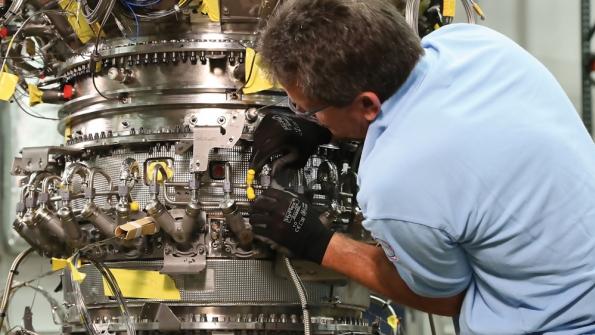
The surplus parts sector’s importance will increase as cost-conscious airlines navigate their way through the pandemic-induced downturn, but the dramatic shift in fleet utilization will likely alter the used-parts landscape.
Among the wrinkles that the sharp drop in air travel demand has created is a slowdown in new-aircraft deliveries. This has put excess new spares, delivered as part of initial-provisioning packages, onto airline balance sheets. Carriers that need cash more than expensive, spare components sitting on their shelves may turn to the used serviceable material (USM) market to offload excess inventory, says Naveo Managing Director Richard Brown.
"There isn’t much of the latest-generation material on the market, and [most of the aircraft] are under warranty,” Brown told Aviation Week ahead of MRO TransAtlantic, taking place virtually October 27-29. "If you’re not going to take, say, your 737 MAXs or new widebodies for a while but you’ve invested in some provisioning, do you as an airline make that material available on the market? Especially among widebodies, if you have high-value, new generation material, you could imagine some of that getting on the used market. This may impact profitable OEM provisioning sales.”
Airbus Senior VP-Customer Support Valerie Manning acknowledges the threat. "We could see some price reductions across parts catalogs,” she said during a panel on MRO TransAtlantic's opening day.
Naveo pegs the commercial air transport materials market at about $32 billion in 2019, including $5 billion on USM. The Covid-19 pandemic’s ramifications will likely lower these figures 40% or so in 2020. Parts purchasing will rebound, but the USM segment's climb will not be as linear as many believe, Brown says.
Removing hundreds of aircraft from fleets on the heels of USM shortages on many popular platforms led some to predict a rapid surge in available material. But the pandemic’s uncertainty means many airlines are simply idling aircraft until demand trends become more clear, rather than retiring them—particularly among utilitarian narrowbodies and smaller widebodies.
"Teardowns will increase, but you only need to be breaking down airplanes when the airlines or MROs need the parts,” Brown says. "Right now, they don’t need the parts so urgently.”
Parking portions of sub-fleets gives airlines the opportunity to harvest parts for their own usage. While some, such as Delta Air Lines and Southwest Airlines, have long embraced the strategy, the pandemic combined with a broader focus on cost-savings on controllable line items such as maintenance spend is leading more carriers to explore the idea. Icelandair’s Oct. 27 announcement that it would retire four of its Boeing 757s and part them out is the latest example.
"Icelandair will realize the part-out value both by selling parts to [third parties] as well as maintain parts for own stock,” says the carrier, which plans to keep 17 757s flying as part of its summer 2021 schedule.
While such strategies could reduce USM demand and keep some quality material off the market, new airline customers will emerge to help generate business for suppliers. While USM is a regular strategy for operators in some regions, not all airlines have embraced it, opting instead for the comfort of new parts, even at a higher cost.
While each carrier is different, USM has always been more established in North America and Europe but is increasingly being utilized in the Middle East and Asia, Brown says. The need to keep costs low as traffic slowly recovers will lead to even more converts.
"USM is an acceptable choice for an increasing number of global airlines looking to save money on new OEM parts,” he adds.


